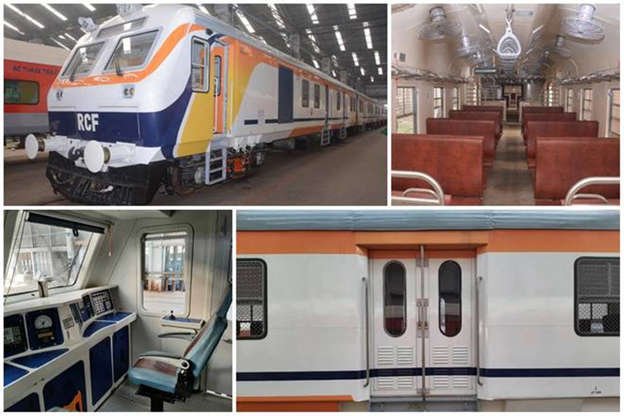
Electricity in the coaches is provided by Bharat Heavy Electricals Limited (BHEL). As compared to conventional MEMU coaches, these coaches have stainless steel body with better acceleration. The rake is provided with an Ethernet-based Train Control and Management System (TCMS), which provides precise train control in addition to the RDM (Rescue Drive Mode) feature that allows train speed to be controlled in case of any failure in the train network. Limits to 60 kmph. ,
Electricity in the coaches is provided by Bharat Heavy Electricals Limited (BHEL).
The Driver Motor Coach of MEMU Rake has an ergonomically designed Driver Desk along with aerodynamic nose front with AC Driver Cab. A major feature of these coaches is that they are low maintenance as compared to the conventional MEMU coaches.
Apart from excellence in technical talent, Phase III MEMUs also provide excellent passenger amenities. Each of these coaches has elegant interiors with FRP paneling, wide windows, cushioned seats, mobile charging sockets and sliding doors. Also, energy efficient LED light fittings with 50 per cent emergency illumination have been provided in each coach.
In addition, the GPS based Public Address and Passenger Information System (PAPIS) consisting of screen displays as well as loud speakers in each coach facilitate the passengers about the railway stations on the way. Also, CCTV surveillance system with networking features has been incorporated for safe travel. Two toilets have also been provided with bio tank in each trailer coach.
These MEMU coaches have higher passenger carrying capacity as compared to conventional MEMU coaches. Each driving motor coach can carry 226 passengers, while a trailer coach can carry 325 passengers, increasing passenger carrying capacity by about 30 percent.

